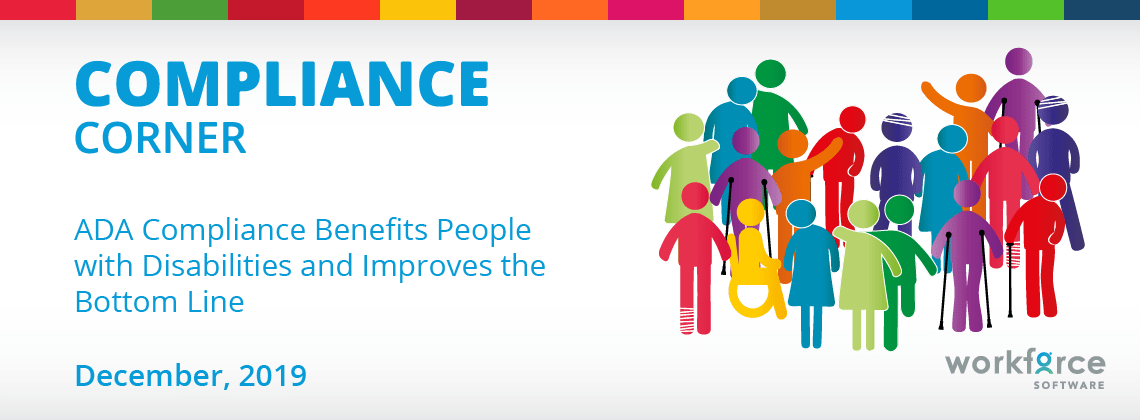ADA Compliance Benefits People with Disabilities and Improves the Bottom Line


Paul Kramer
Director of Compliance
The ADA prohibits discrimination based on an employee’s or applicant’s disabilities and requires employers with 15 or more employees to provide reasonable accommodations—changes to the position or workplace that do not cause undue hardship—to allow workers with disabilities to gain, regain, or maintain their jobs. A particularly important accommodation that may enable talented employees with disabilities to continue in their positions is a leave of absence. Leaves that can assist disabled employees include time off to:
Obtain medical treatment.
Time off may be needed for doctor appointments, surgery, psychotherapy, physical or occupational therapy, rehabilitation, or merely to pick up a prescription.
Recuperate.
Leave to recuperate from an illness, symptom, or episode related to a disability may be a reasonable accommodation.
Avoid temporary adverse workplace conditions.
A temporary adverse workplace condition such as a broken air conditioner or furnace may require time off or permission to work remotely for workers who are sensitive to heat or cold due to a disability.
Digitalize Compliance Processes to Reduce Risk
Learn more effective ways to demonstrate compliance with the complex matrix of labor laws, while also keeping costs down and reducing risks.
Obtain repairs.
Time off may be necessary for employees with disabilities to seek repairs on daily living aids such as a wheelchair, an accessible van, a prosthetic limb, or an orthotic device.

Attend training.
Leave to train a service animal, to receive training in the use of braille, to learn sign language, or to train on other assistive technology may be a reasonable accommodation.
Extend other protected time off.
Employers should consider extending a disabled employee’s medical leave beyond the protected time off permitted under a federal or state leave law as a reasonable accommodation.
Reasonable accommodations, including leave time, are an important part of the ADA as they give persons with a disabilities equal access to employment opportunities. And good news for employers is that most workplace accommodations do not cost much and have a positive effect on business. Consequently, accessibility to the workforce for people with disabilities should top every employer’s list.
Subscribe to The WorkForce Blog
Learn the art and science of maintaining productive, happy, engaged employees.
Discover More
Nucleus Insights from WorkForce Customers Research Note
Nucleus Research interviews WorkForce customers who validate why we’re ranked the #1 WFM enterprise vendor for 10 consecutive years.
Elevate Employee Experience: Checklist for Operational Leaders
Get the practical steps and technology functionalities operation leaders need to improve their employees’ work experiences.
Streamlining Complex Workforce Compliance Requirements Boosts Productivity
Discover how workforce compliance software helps EMEA organisations navigate complex legislation, enhance compliance and boost operational efficiency.



